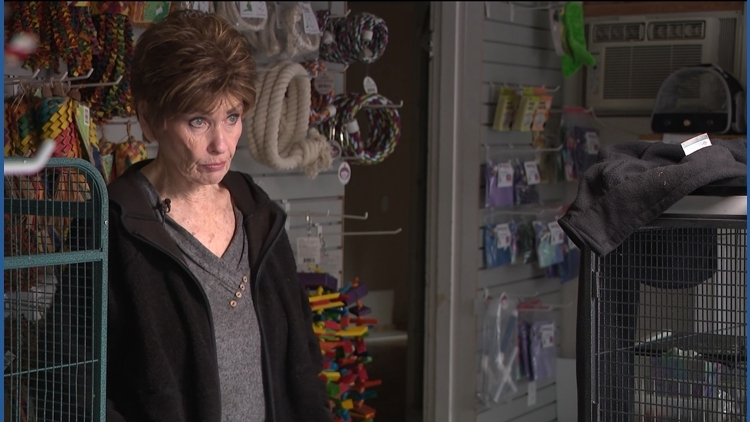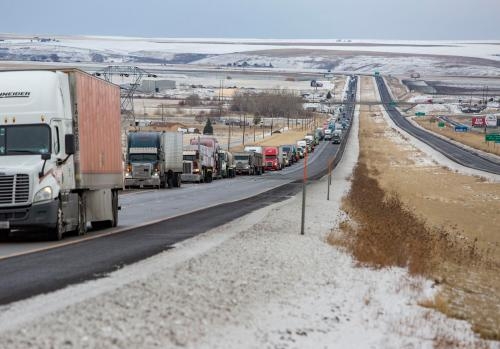

Published on: 03/13/2025
This news was posted by JC News
Description
Corvallis, Ore., March 13, 2025 – The Oregon Parks and Recreation Department and Siuslaw National Forest remind visitors to the Oregon coast that it is plover nesting season ¬— beachgoers can help recovery efforts for the threatened western snowy plover March 15 to Sept. 15. Sensitive plover nesting areas are identified on maps for the northern Oregon Coast and southern Oregon Coast. Signs may be present at trailheads with additional rules and limits, such as staying on the wet sand and no dogs even on a leash, to help protect the small shorebirds and their exposed nests during this crucial period. Visitors may also see rope fencing in dry sand areas; this fencing delineates some, but not all, of the critical plover habitat that should be avoided. Recreation restrictions occur in designated plover management areas: stretches of beach along the coastline where plovers nest or might nest. These areas combined make up about 40 miles of Oregon's 362 miles of shoreline. Seasonal recreation restrictions have helped protect these small birds that nest on open sand along Oregon’s beaches. Nests, and especially chicks, are well-camouflaged. During the nesting season, human disturbances can flush adult plovers away from their nests as they attempt to defend their young. Left alone too long, or too often, eggs or chicks can die from exposure, predators or people. Reminders for recreation on designated plover beaches March 15-Sept. 15: The following are not permitted: dogs (even on a leash), driving a vehicle, riding a bicycle, operating electric-assisted bicycles, camping, burning wood, flying kites or operating drones. Foot and equestrian traffic are permitted below the high-tide line on hard packed sand. Respect signs and barriers to protect nesting habitat. “With the support of the public and improvements to plover habitat, we’re making great strides in reversing the decline of this species,” said Cindy Burns, Siuslaw National Forest wildlife biologist. “Keep doing your part to understand nesting season rules and to share the beach this spring and summer.” The U.S. Fish and Wildlife Service listed western snowy plovers as a threatened species in 1993, when officials counted only 45 breeding adults. The numbers of breeding adults have steadily increased since then due to ongoing efforts. Officials counted 440 during the breeding season survey in 2024. “We appreciate visitors' support in keeping these shorebirds safe in the combined 40 miles of protected area along the coast. We invite visitors to enjoy permitted recreation in those areas or to recreate without seasonal restrictions on the hundreds of miles of beaches not designated as plover nesting areas,” said Laurel Hillmann, ocean shore specialist for Oregon Parks and Recreation Department. More information on the snowy plover, including detailed maps of nesting sites, can be found on the Oregon State Parks website (oregon.gov/plovers) and on the Siuslaw National Forest website (https://t.ly/AKPAN). Visitors to the Oregon Dunes National Recreation Area and Sand Lake Recreation Area can review Off-highway Vehicle (OHV) maps to identify unrestricted recreation areas and information on riding motor vehicles on the sand. New plover activity - Plovers have been found nesting in new or historical nesting sites. For example, plover nests have been identified at the Sand Lake Recreation Area, near the lake’s inlet, every year the last few years. Beachgoers can protect these birds by recreating on the wet sand areas, avoiding roped off nesting areas, observing trail kiosks and signs, packing all trash out and keeping dogs on leash. Background on plover protections: Several land managers oversee beach activity for plover protection, primarily the U.S. Forest Service (USFS), the Bureau of Land Management (BLM) Oregon Parks and Recreation Department (OPRD), and U.S. Fish and Wildlife Service (USFW). Habitat loss from invasive plants — as well as human disturbances, including litter and discarded food scraps that attract predators — have contributed to the birds’ decline. The Oregon Dunes Restoration Collaborative, saveoregondunes.org, is working with land managers on a restoration strategy and to raise public awareness about the need to restore the dunes ecosystem for western snowy plovers, rare plants and animals and the unique recreation opportunities.
Other Related News
12/25/2025
The giving season continues this weekend with the gift of one of the top high school girls...
12/25/2025
The owner of BiZee Bird Store says she will likely close indefinitely after a fire tore th...
12/25/2025
A single-engine plane crashed in a remote part of Lake County killing the pilot A dog on b...
12/25/2025
If you missed it Sheriff Hanlin is told the dispatchers are slated to do another Attempt t...
12/25/2025










